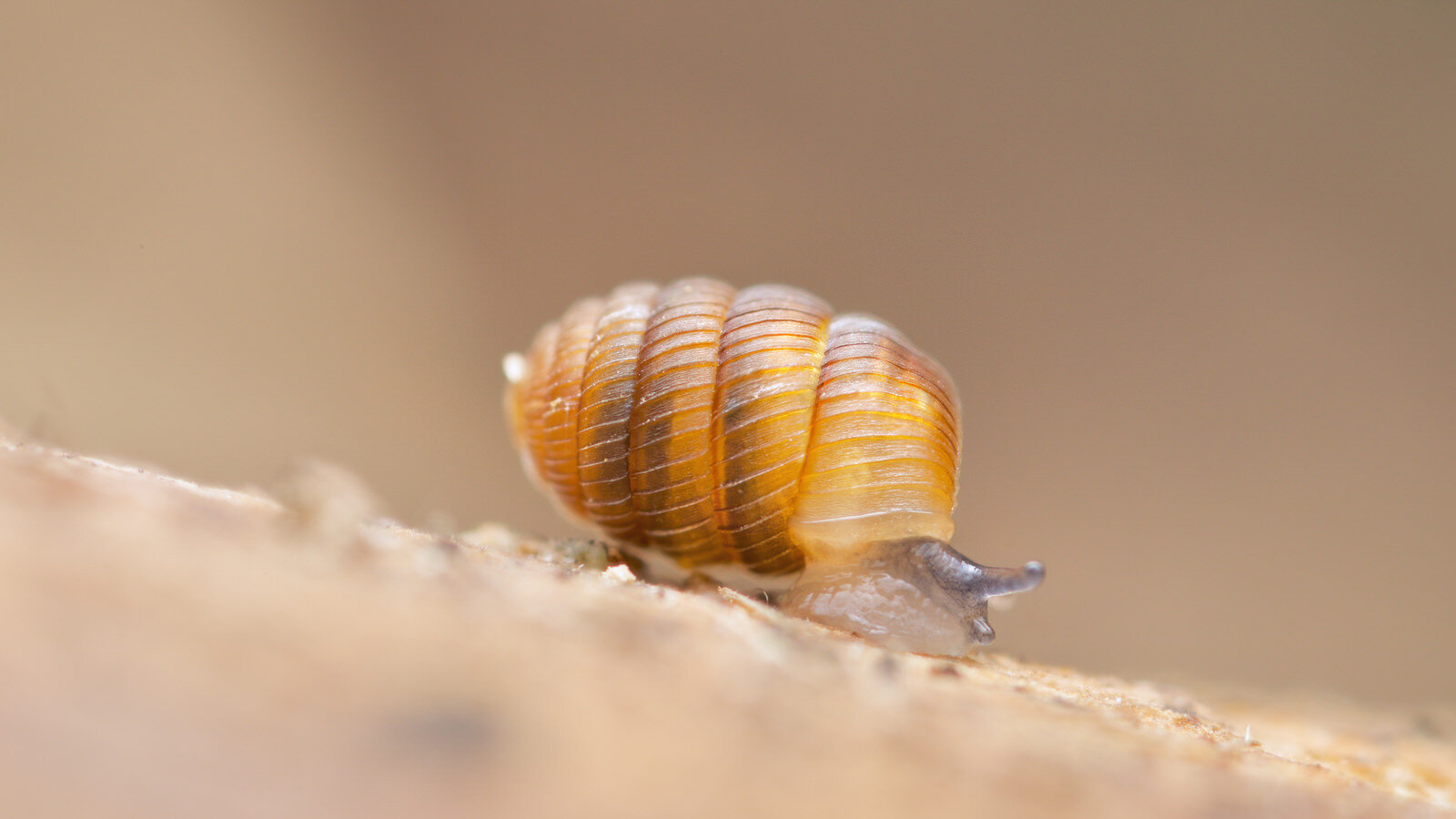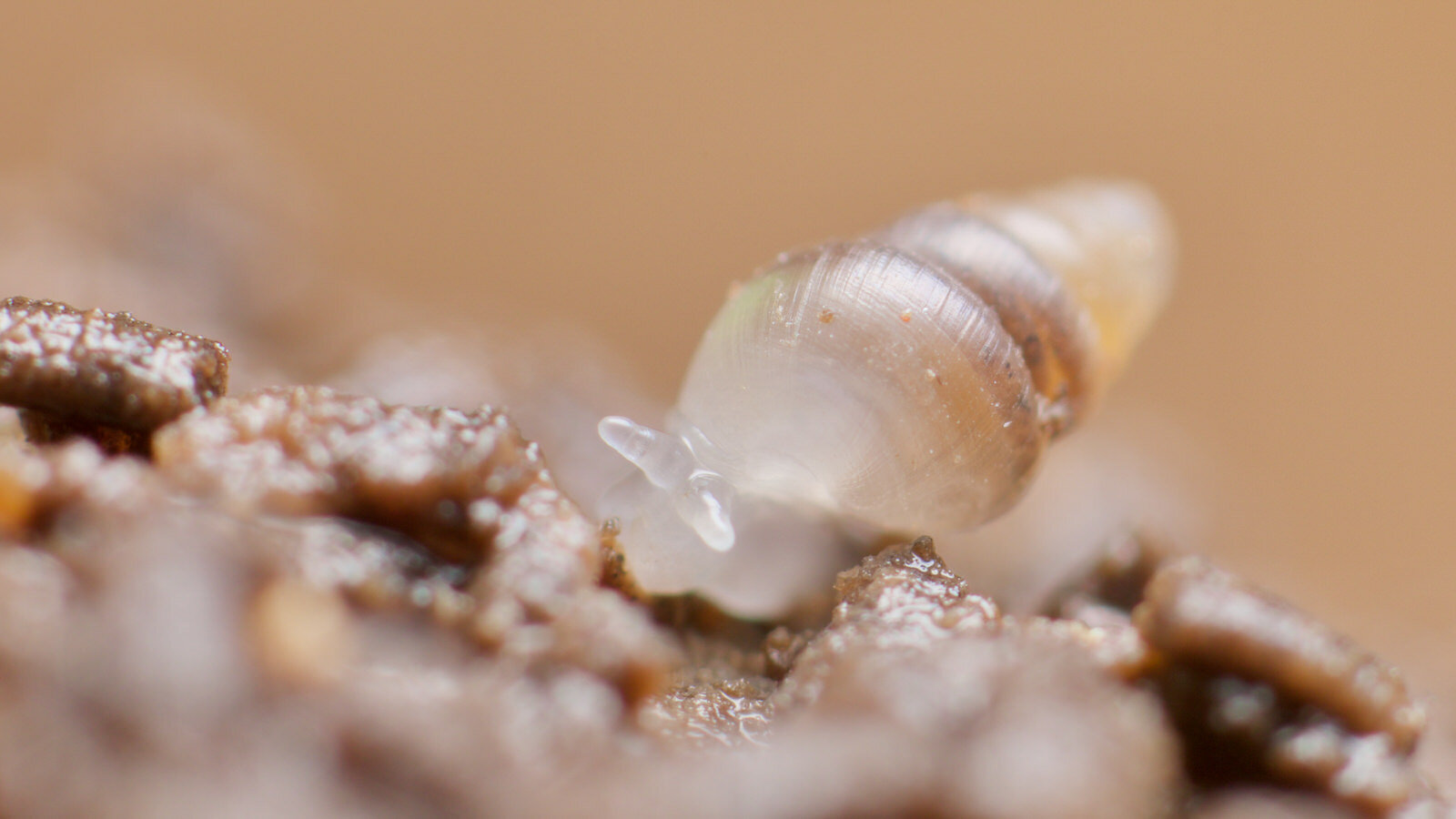
Terrestrial micro snails
Micro snails are found worldwide, mostly as aquatic species, though as you may have guessed by now, there are plenty of fully terrestrial species. This includes the world's smallest terrestrial snail, which, if you're a micro snail, was always probably going to be on the cards. So far, as of early 2022, the tiniest title goes to a 0.6-0.68mm snail called Angustopila psammion from northern Laos, having wrenched the title from the foot of another Angustopila species.
They are also known as micromollusks because it sounds more sciency.
Calling snails ‘micro’ is of course just a term that helps define an arbitrary grouping of tiny terrestrial snails that have all evolved to take advantage of certain specific micro environments, usually in forests, that larger snails would be incapable of using. They live alongside other soil animals, deep in the leaf litter of woodlands and forests or tracking very slowly under rotting, damp logs.
Micro snails are entirely reliant on having a stable, damp environment to live in, as they are more at risk of drying out from evaporation than their larger gastropod relatives. The smaller the snail, the the more they risk drying out. Because of this and with their tiny size preventing them from travelling any distances, they usually stay close to their food source, deep within the leaf litter, soil, or under logs.
Nearly all land micro snails are herbivorous and mainly generalist, taking whatever they can find, from plants to fungi, moss, frass and algae. Some will also eat nematodes and have a nibble at dead arthropods.
Regenerating bush, Tairua, New Zealand Feb 2016
Micro snail, Compton Dundon, February 2019
Cochlicopa sp. under stones, East Portlemouth, S Devon, UK Sept 2016
Terrestrial or land snails are nearly all hermaphrodite, being both male and female, with the exception of the family Pomatiidae that still retains male and female sexes. All snails also have a radula, a rasping flexible band, covered with thousands of tiny teeth.
Micro snail, Koper, Slovenia April 2017
Micro snail from the wet tropics, Northern Queensland, Australia
Micro snail, Koper, Slovenia April 2017
Carychium sp. micro snail, Wookey Hole woods, Somerset, UK Jan 2017
Slender Herald snail, Carychium tridentatum, Slovenia, April 2017
Merdigera obscura micro snail, East Prawle, S Devon UK Sept 2016
Acanthinula aculeata, micro snail, UK
Above is Acanthinula aculeata, a common and rather beautiful micro snail across Northern Europe.
Terrestrial micro snails don't just wander about outside. There are some species that are adapted to cave life like the Zospeum species below from Slovenia, found in a tiny, muddy cave, feeding on the clay substrate. They are known as glass snails and are transparent and completely blind. There is something so beautiful and ethereal about such a tiny animal, living out its life in the dark. At around 2mm big, they only need to move a couple of centimetres a week to live and find enough food. As mentioned before, the smallest micro snails can’t survive without a stable and damp environment to live in. A cave can provide both.
Zospeum species micro snail
Zospeum micro snail








